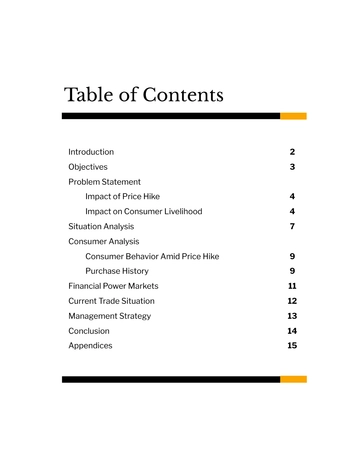Sales Strategy White Paper
I. Introduction

This White Paper is created to provide comprehensive guidance and direction to [YOUR COMPANY NAME]'s sales teams. In this document, we will delve into key aspects of target markets, customer segments, and effective selling techniques to enhance your sales efforts.
II. Understanding Target Markets
A. Market Analysis
[YOUR COMPANY NAME]'s current market landscape analysis
Identification of key market trends and opportunities
Competitor analysis highlighting strengths, weaknesses, opportunities, and threats (SWOT)
B. Defining Target Markets
Identification of primary and secondary target markets
Segmenting target markets based on demographics, psychographics, and behaviors
Prioritizing target markets based on potential revenue and strategic fit
C. Market Positioning
Defining your company's unique value proposition
Positioning your products/services relative to competitors in the market
Developing messaging that resonates with target market segments
“90 percent of selling is conviction and 10 percent is persuasion.” —Shiv Khera
III. Competitive Analysis
Examination of key competitors and their strategies, along with our positioning to leverage emerging opportunities.
Competitor | Strengths | Weaknesses | Opportunities |
|---|
[COMPETITOR'S NAME] | Strong market presence | Limited product range | Expand product line |
[COMPETITOR'S NAME] | Extensive distribution network | High pricing | Competitive pricing strategy |
IV. Customer Segmentation Strategies
A. Segmentation Criteria
Demographic segmentation (age, gender, income, etc.)
Psychographic segmentation (lifestyle, values, attitudes, etc.)
Behavioral segmentation (purchase behavior, usage patterns, etc.)
B. Targeting Strategies
Differentiated targeting: Customizing offerings for specific segments
Concentrated targeting: Focusing efforts on a single primary segment
Undifferentiated targeting: Offering a standardized product to the entire market
C. Persona Development
Creating detailed buyer personas representing target customer segments
Understanding the needs, pain points, and motivations of each persona
Tailoring sales approaches and messaging to resonate with each persona
Caption: Target audience segmentation.
V. Effective Selling Techniques
A. Sales Methodologies
Consultative selling: Understanding customer needs and providing solutions
Solution selling: Positioning products/services as solutions to specific problems
Relationship selling: Building long-term relationships with customers based on trust and rapport
B. Sales Process Optimization
Mapping out the sales process from lead generation to closing the deal
Identifying bottlenecks and inefficiencies in the sales funnel
Implementing strategies to streamline the sales process and improve conversion rates
C. Communication and Negotiation Skills
Active listening: Understanding customer needs through attentive listening
Effective communication: Articulating product/service benefits clearly and persuasively
Negotiation tactics: Strategies for reaching win-win agreements with customers
“Chase the vision, not the money; the money will end up following you.” —Tony Hsieh
VI. Sales Enablement Resources
A. Sales Collateral
Development of sales presentations, brochures, and case studies
Creation of sales scripts and objection-handling guides
Provision of product/service demos and trials
B. Training and Development
Sales training programs on product knowledge, selling techniques, and negotiation skills
Continuous learning opportunities through webinars, workshops, and online courses
Mentorship and coaching programs for sales team members
VII. Sales Performance Measurement
A. Key Performance Indicators (KPIs)
Tracking sales metrics such as conversion rates, average deal size, and sales cycle length
Monitoring pipeline health and forecasting future revenue
Analyzing the effectiveness of sales strategies and initiatives
B. Sales Analytics and Reporting
Utilizing sales analytics tools to gain insights into customer behavior and sales performance
Generating regular reports on sales performance, trends, and opportunities
Leveraging data-driven insights to make informed decisions and adjustments to sales strategies
Don’t be hasty with your goals; think, strategize, and then create a goal.
VIII. Conclusion

In conclusion, this White Paper serves as a comprehensive guide to help [YOUR COMPANY NAME]'s sales teams excel in targeting the right markets, segmenting customers effectively, employing winning selling techniques, and leveraging sales enablement resources. By implementing the strategies outlined in this document and measuring performance through effective KPIs and analytics, we are confident that our sales teams will achieve greater success and drive business growth.
White Paper Templates @ Template.net
































